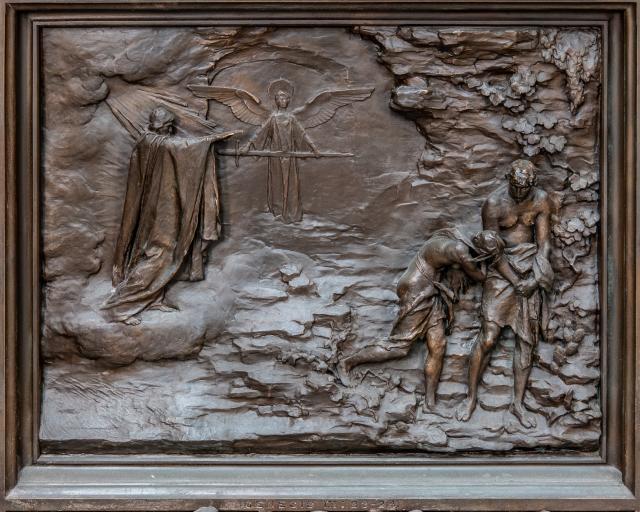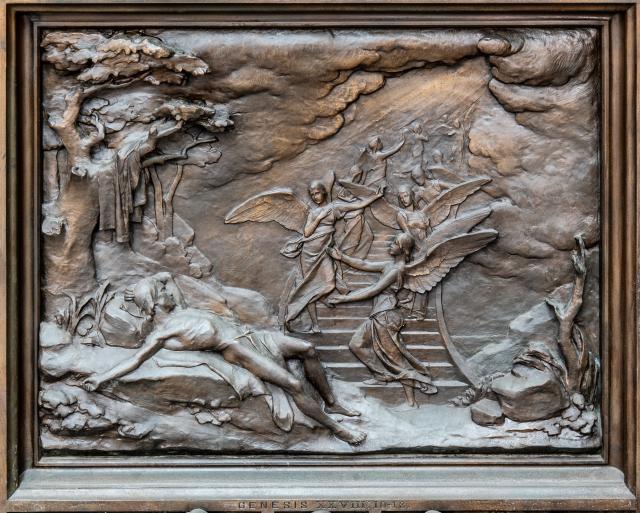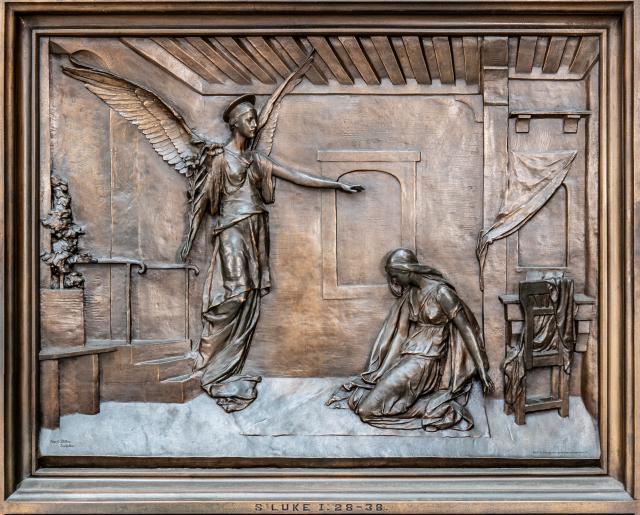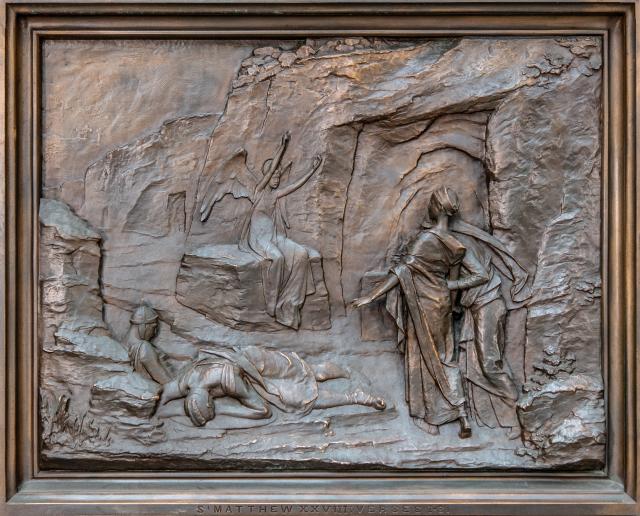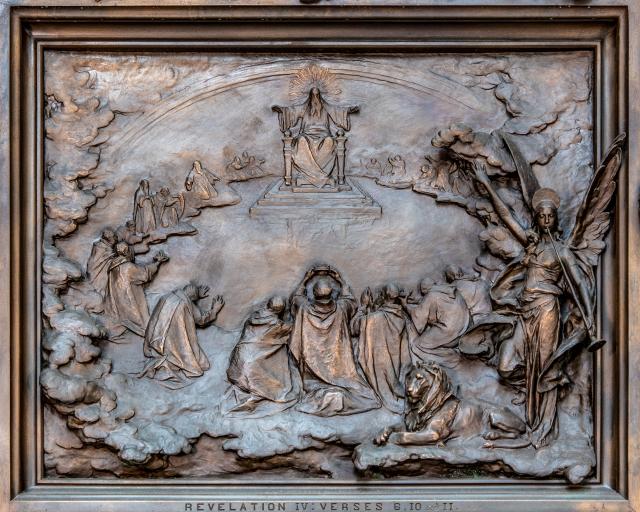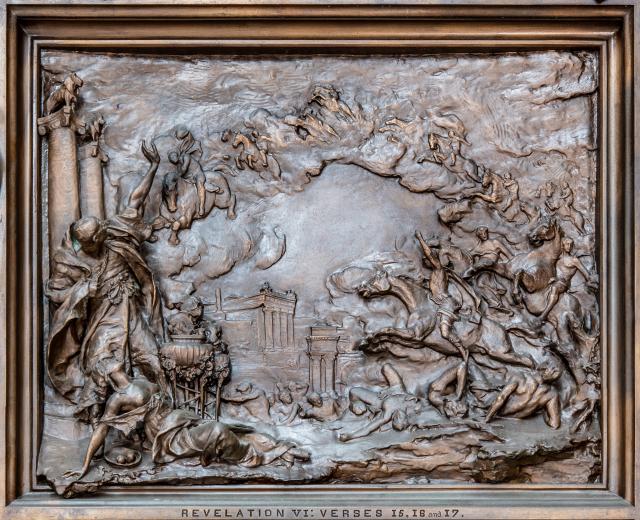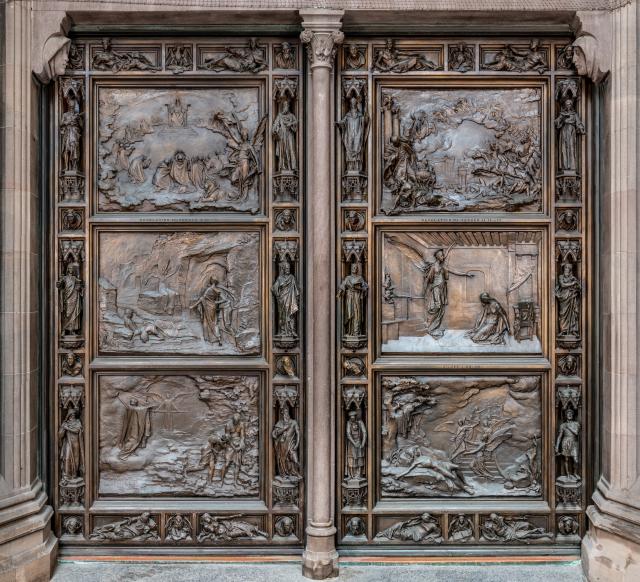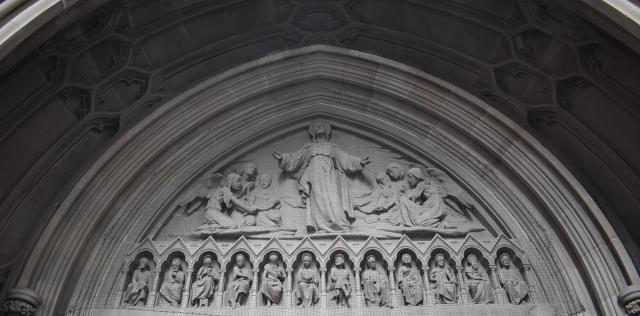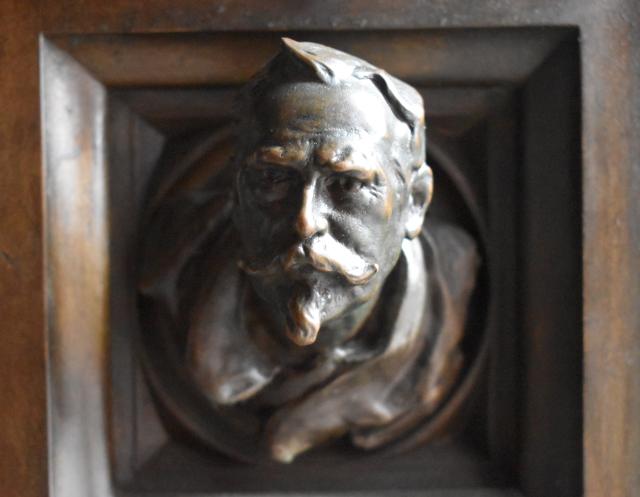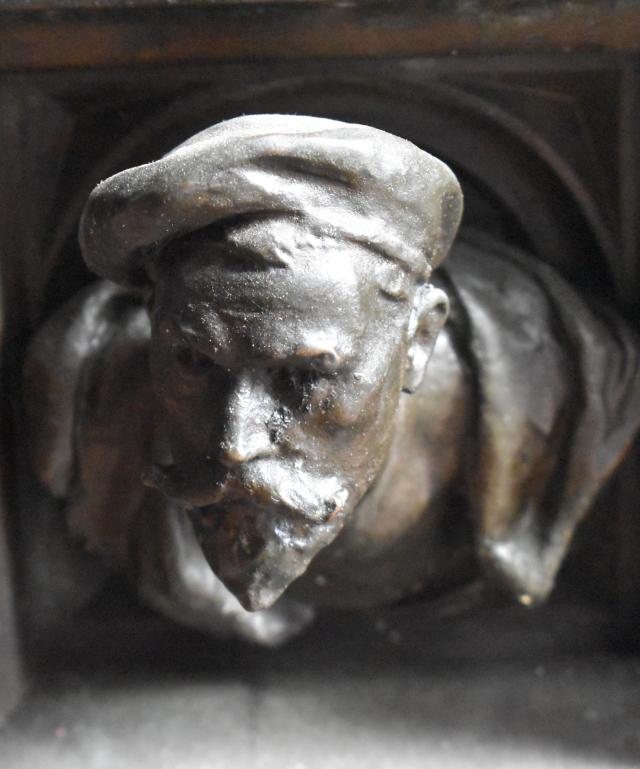Trinity's East Bronze Doors
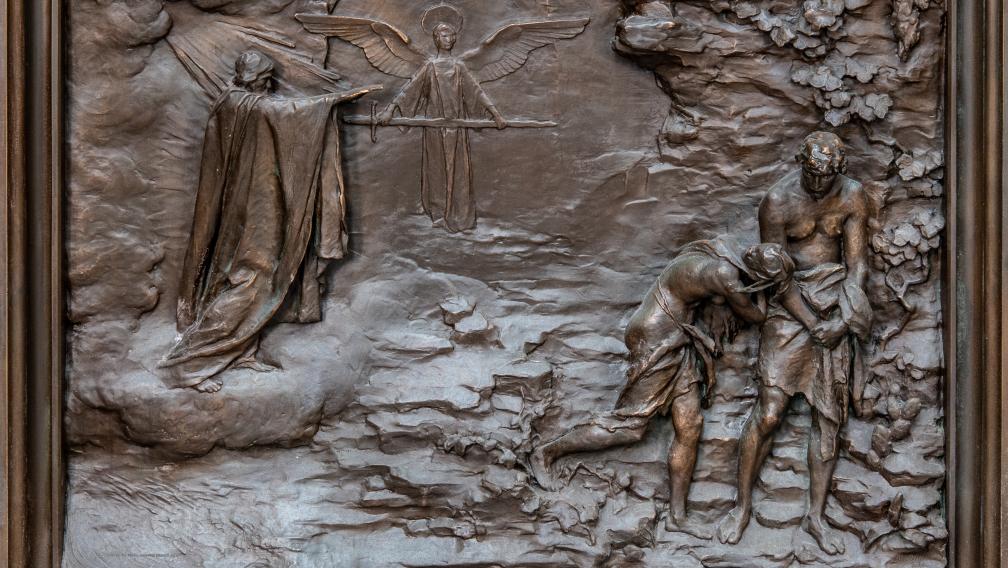
For years, thousands of people have visited Trinity Church Wall Street and St. Paul’s Chapel, as both pilgrims and tourists.
Summer usually generates even greater interest as vacationers come to Lower Manhattan to learn more about the history of the parish and how Trinity’s history reflects that of New York City and even the United States.
From now until Labor Day, Trinity is presenting website content designed for visitors, to maximize their experience, whether they have an hour, a day, or an entire week to explore the church, the chapel, and its churchyards.
For those tourists and pilgrims with the time and interest, the Astor Memorial Doors at Trinity Church Wall Street require far more than a casual glance. While that statement is true for all three sets of doors, it’s especially relevant to the east-facing doors. Even back in the 1890s, when the three sets of bronze doors were first commissioned, it seemed inevitable that the east-facing doors, at the main entrance to the church, were destined to be the most ornate.
Architect Richard M. Hunt had set up an open competition for sculptors. Under the terms of the competition, the winner would design the east-facing door, with the two runners-up taking responsibility for the sets of doors on the south and north sides of the church. The overall theme for the Astor Memorial Doors is “Thou didst open the Kingdom of Heaven to all believers,” from the hymn “Te Deum.” The Trinity Parish Yearbook and Register, 1894, Trinity Wall Street Archives, New York, 124, states that the east-facing door “would give a symbolical view of the redemption and salvation of the human race.”
However, for the competition, sculptors submitted images to portray “Expulsion of Adam and Eve from the Garden of Paradise.” Karl Bitter, a 24-year-old immigrant from Austria who had come to the United States only 16 months earlier, submitted the winning entry. That image is the first of six on the east set of doors, beginning on the bottom left (see photo above).
Following the dismissal of Adam and Eve from the garden, Bitter’s adjacent image immediately offers hope, portraying Jacob’s Dream at Bethel (above) in which God promises to bless Jacob’s descendants.
The two images in the middle section portray the “Age of Incarnation” with direct references to Jesus. On the door to the right, the archangel Gabriel visits Mary in Nazareth, the event called the Annunciation (above).
To its left, Bitter shows us the empty tomb of the first Easter, the symbol of redemption and victory over death.
The top left image represents the worship of the church in glory, with the saints kneeling before Christ on the throne, an angel with a trumpet to the right.
The final image on the upper right is described by the Trinity Parish Yearbook and Register, 1894, Trinity Wall Street Archives, New York, 126, as follows: “a fearful picture of the triumph of Divine Justice over an ungodly and rebellious world.”
However, with the east-facing bronze doors, there is much more to examine than those six images. Figures from scripture and from the early Church flank each panel.
That’s Abraham and Moses on each side of the expulsion from the garden, with Aaron and Joshua around the portrayal of Jacob’s Dream. Saints Luke and Paul can be found on each side of the Annunciation, with St. Mark and St. John the Evangelist on either side of the empty tomb. You’ll find St. Jerome and St. Athanasius surrounding the “worship” image on the upper left, with St. Ignatius and St. Basil anchoring the portrayal of Divine Justice.
Reclining figures can be seen at the bottom and top of the doors, each with a specific reference, and a nod to the four evangelists: lower left, Mortality and Sin along with a lion, symbol of Mark’s Gospel; lower right, Time and Tradition, with a man symbolizing the Gospel according to Matthew; upper left, Eternity with an eagle representing John’s Gospel; and Divine Justice, with the ox representing the Gospel according to Luke.
Above the doors, in what represents a climax of the theme of “Thou didst open the Kingdom of Heaven to all believers,” the 12 apostles are seated with the image of Christ in majesty above them.
Karl Bitter gives an architectural shout-out to Richard M. Hunt, the man who chose him as the winner of the competition, by including Hunt’s image below the Annunciation scene.
Finally, following a tradition that dates to the Renaissance, Bitter gets his own visage onto the doors, his head sporting a beret.
Except when otherwise noted, all photos are by Colin Winterbottom.






